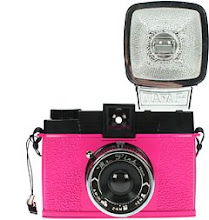
Resistance. Is. Futile. I just have to offer another homage to Tony Duquette, the brilliant and eccentric California designer of interiors, stage sets and jewelry. Some of you posted such wonderful tributes, I hesitated to keep it going here. I got over it. To my mind, we'd do well to keep Duquette's obsessive, audacious, transform-the-pedestrian-into-something-beautiful-and-splendid vision front and center--a source of daily inspiration.
I'm weaving together some shots I took of the Duquette-influenced BG windows with some of Guy Trebay's words (pilfered from his TD piece that appeared in The Times this fall).

In 1999, the last time Tony Duquette was rediscovered, Amy Spindler, the style editor of The New York Times Magazine, made an observation in [The Times] that still rings true. “When a Banana Republic catalog starts to look like the trendy, vacuous pages of Wallpaper, and Club Monaco is indistinguishable from Prada,” she wrote, “you know it’s time for high style to move on.”
But an era of baroque theatrics in fashion and design, which Ms. Spindler suggested a Duquette comeback might inspire, never quite materialized. “A coral branch on a coffee table does not a Duquette make,” as the interior designer Jeffrey Bilhuber said. Mr. Duquette died in late 1999 at 85, and what followed in the design world was, if not uniformly pedestrian, somehow lacking the rococo whimsy for which he was renowned.

Rather than the fantastical visions Duquette conjured up for clients with the movie sets he designed for Vincente Minnelli, the jewelry he made for the Duchess of Windsor and interiors he created for, among others, Mary Pickford and Doris Duke, consumers were delivered into what Louis Bofferding, an antiquarian and style columnist, called the era of “the square lampshade, of boring beige and white.” Those trendy vacuous pages of Wallpaper turned out to be a visual template for a lot of designers.

With the arrival [this month] of Tony Duquette, a hefty lavish monograph on the late designer, the style world may be getting a kind of gilt-edged Post-it note, an overdue reminder to a market dominated by monotonous status goods that nothing is quite so luxurious as an individual eye. “There is way too much out there that feels corporately and central-office driven,” said Linda Fargo, the fashion director at Bergdorf Goodman, the Fifth Avenue retailer whose Christmas windows are inspired by Duquette’s vision, as rendered in scenarios that are part Elsie de Wolfe and part Brothers Grimm.
“Tony always said he was about beauty and not luxury, if you’re going to define luxury by cost,” Ms. Fargo said. Enthusiastic about raiding the storehouses of the past for his projects, Duquette was also audacious in his use of shoestring effects to set off important antiques. “He was Rumpelstiltskin spinning gold from straw,” said Ms. Fargo, echoing Tom Ford’s observation that only Mr. Duquette could see a piece of junk and imagine a pagoda.

Hutton Wilkinson, who wrote Tony Duquette with Wendy Goodman, the design director of House & Garden, says that where some people saw a hubcap, Duquette saw a shining disc to set in the middle of an improvised sunburst.
“Tony was no label lover,” Mr. Wilkinson said. “His attitude was that the last definition of luxury was that it’s just for you.” It was not mass production that Duquette resisted; it was the dumbing-down of style. “The democratization of style and design may be a fantastic thing,” Ms. Goodman said. “But while there’s a level of accessibility now, there’s also a kind of standardization he disliked.”
In his jewelry designs, he balked at the notion that everything revolved around the gem. “I love his approach to doing real jewelry in the spirit of fake jewelry,” said Victoire de Castellane, the designer of playful jewels for Dior. “His approach was not to be enslaved by materials, to be concerned first with the creative effect. He combined gems, cut stones and rough gems, forgetting their value,” Ms. de Castellane said. “They were completely crazy, mixes of real coral with amber and pink quartz, associations with colors that were audacious, odd, maybe not in such good taste, but never bourgeois.”

“Duquette’s work was either haute Bohemian or Bohemian masquerading as haute,” Mr. Bofferding said. “You did not necessarily want to see it by the light of day.” Still, he added: “the vision was informed and full of historical reference. And he looked at things as an artist does,” with an emphasis on color and texture and aesthetics instead of price tags.
“Tony really sprung out of nowhere,” said Ms. Goodman, which is to say tiny Three Rivers, Mich., by way of early 20th-century Los Angeles. “He was of the culture of make-believe,” she added, referring to studio-era Hollywood, where Duquette’s work was enthusiastically taken up by the movie people who also formed a social set around him and his wife.

Duquette, like his early mentor, the decorator Elsie de Wolfe, had both the moxie and the unfettered, rule-breaking approach typical of certain self inventions. “Elsie de Wolfe always said, ‘I was born an ugly child in an ugly age,’ and so she committed herself to creating beauty,” Ms. Goodman said. Having taken the same inventory, Duquette arrived at a similar resolve. “He was channeling something, putting all his references into the blender of his imagination,” Ms. Goodman said. “He believed more than anything that people had access to things they were not aware of.”

Young designers looking to shake off the more deadening aspects of an increasingly corporate design culture might learn a lot from Duquette, Ms. Goodman said. “It’s like: ‘Wait a minute, those things I thought about, I can do them,’” she said. “‘I can do things in an unorthodox way. I can be a mess.’”


:bottom two images of duquette's home, dawnridge, courtesy of the times. all others dianamuse.


No comments:
Post a Comment